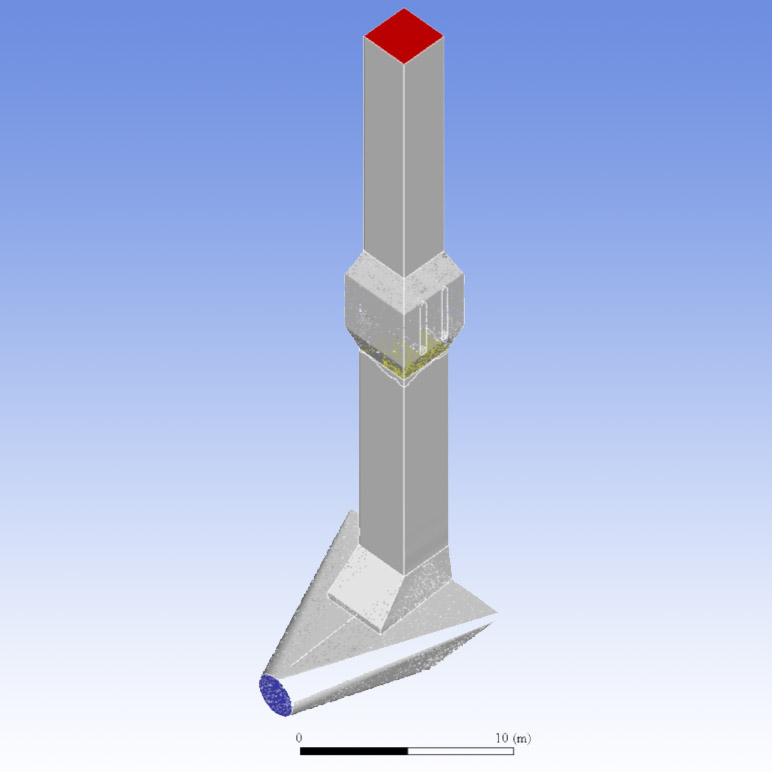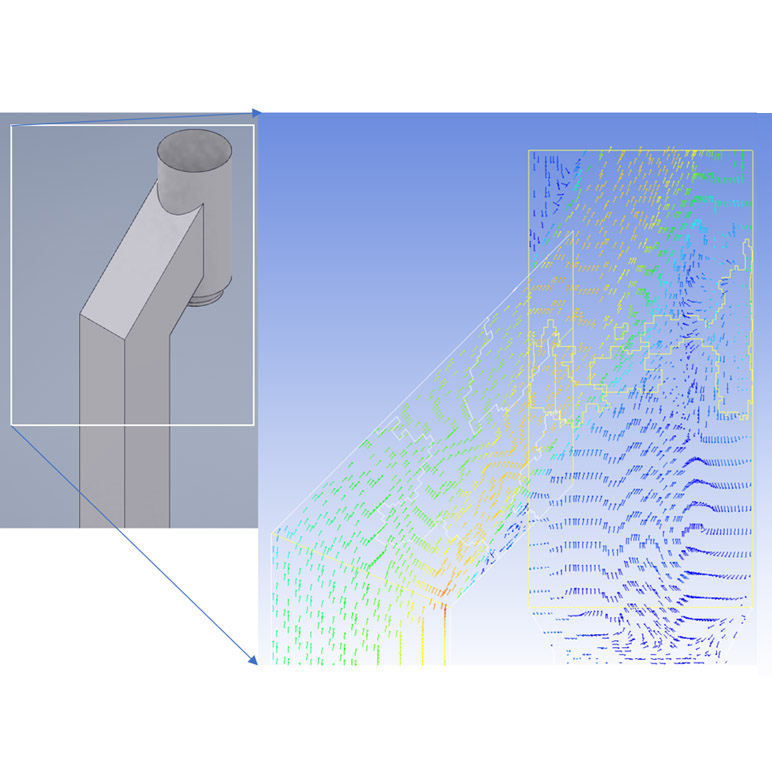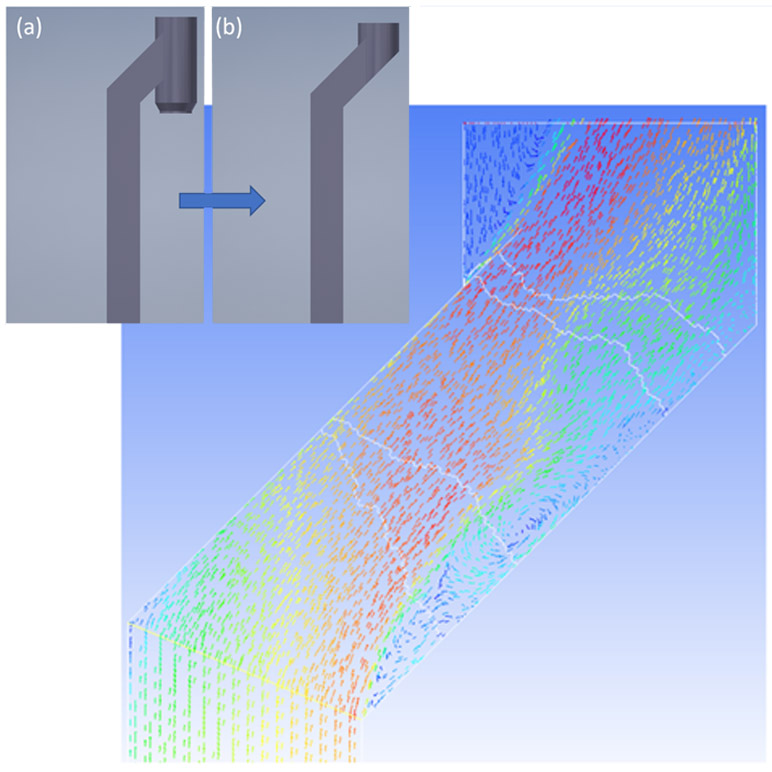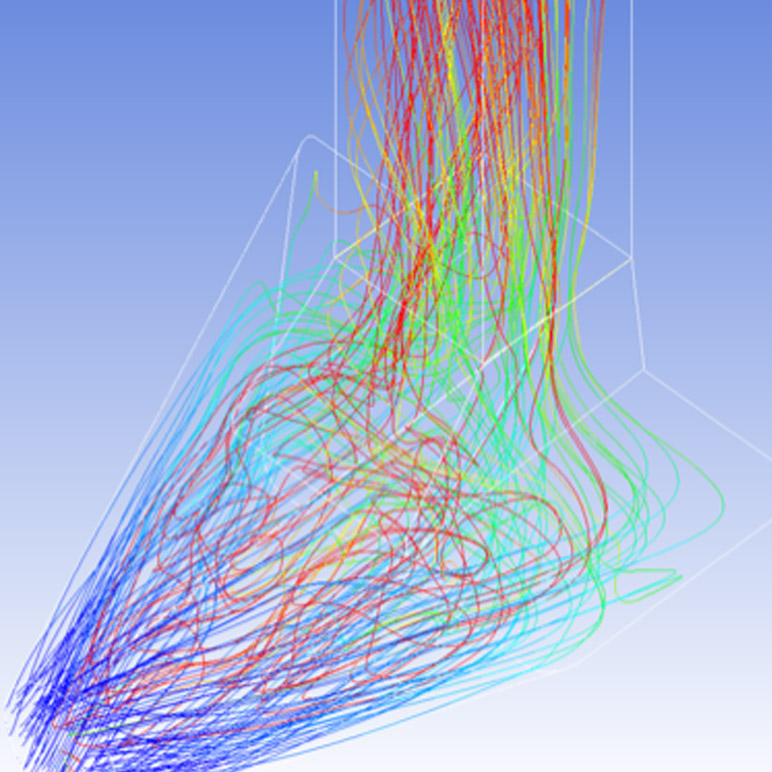GT Bypass Stack
An engineering firm has received an order for realizing a redesign of a gas turbine bypass stack. Important requirements for such a design are minimization of flow resistance and sound levels, where the stack pressure drop is an important factor in the functioning of the gas turbine. Sound levels need to meet legislative requirements.
Design
An engineering firm was awarded a project for realizing a redesign of a gas turbine bypass stack. Important specifications for such a stack are minimal flow resistance and reduction of noise levels. For optimal functioning of the gas turbine, low downstream pressure drop is important (backpressure), sound levels need to meet legal requirements
The client has realized a basic design for meeting these demands, and Mateq Process was requested to analyze the design for flow pattern and pressure drop. Also the connection of the stack to an existing communal stack tip was analyzed, any recirculation patterns there can be a cause of noise and additional pressure drop.
Analysis




Conclusies
In this at first sight simple assignmen – ‘compute what we have engineered’ – the added value of Mateq Process was recognized in the observation of potential performance issues, and in proposing an improved solution.
The assignment was realized according these proposals and is functioning to full satisfaction of the end client.



Combustion2 is een joint venture van Mateq Process en SUSCOMB.
Combustion2 levert verbrandingsapparatuur voor circulaire energiesystemen.

Contact data
+31(0)6 20 66 26 75
info@mateqprocess.com
terms of delivery
privacy (in Dutch)
cookiebeleid
©Mateq Process